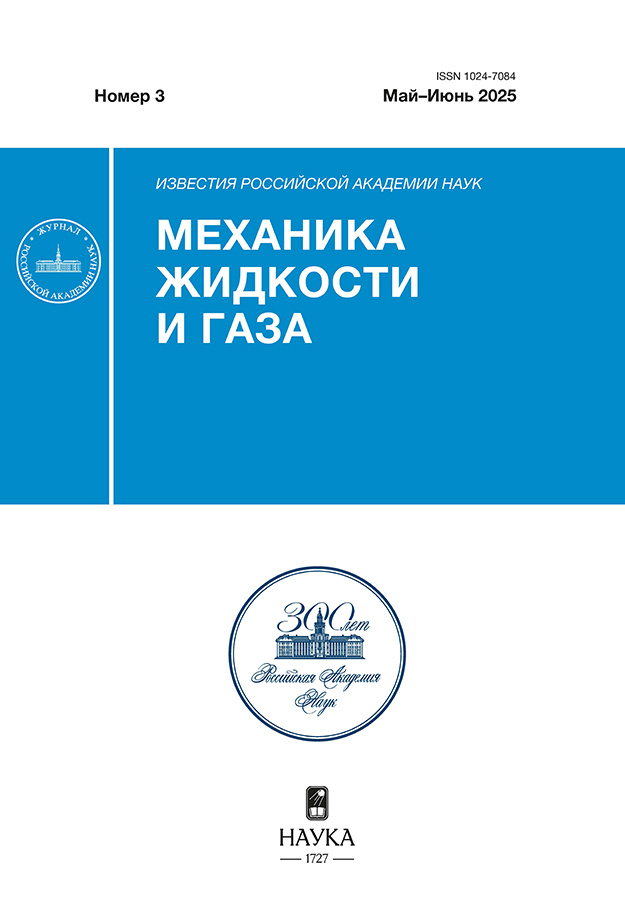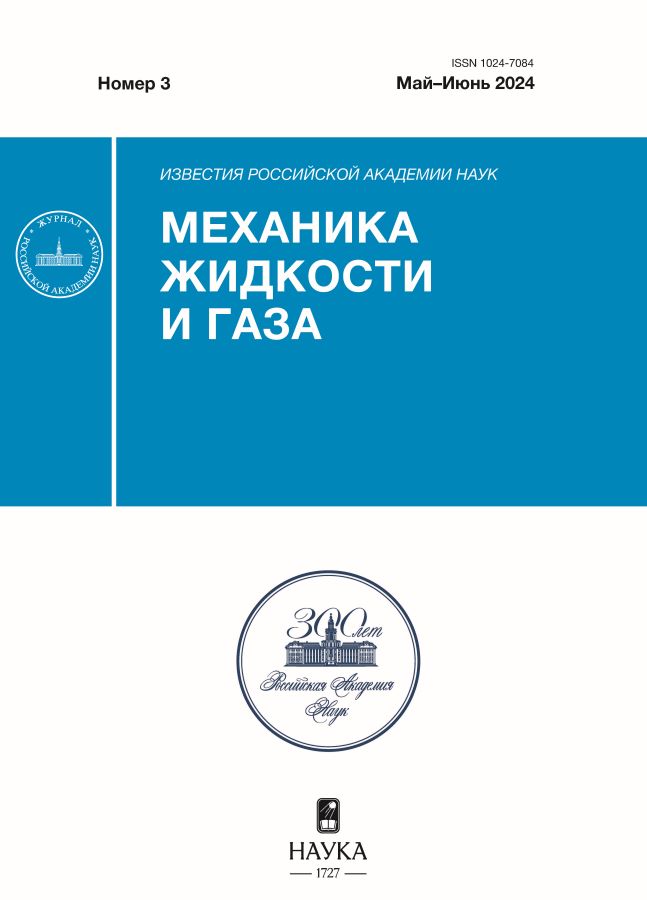Экспериментальное и численное исследование эффекта кавитационного присасывания
- Авторы: Уколов А.И.1, Родионов В.П.1
-
Учреждения:
- Керченский государственный морской технологический университет
- Выпуск: № 3 (2024)
- Страницы: 20-29
- Раздел: Статьи
- URL: https://transsyst.ru/1024-7084/article/view/682509
- DOI: https://doi.org/10.31857/S1024708424030021
- EDN: https://elibrary.ru/PGFDYS
- ID: 682509
Цитировать
Полный текст
Аннотация
Рассматривается явление возникновения силы присасывания жесткого цилиндрического корпуса, ограничивающего затопленную кавитирующую струю, к твердой поверхности. На разработанной установке выполнен эксперимент по определению силы отрыва, необходимой для преодоления эффекта присасывания. Методом численного моделирования получены зависимости силы присасывания от диаметра корпуса и расстояния от сопла-кавитатора до поверхности. Проведены расчеты объемной доли паровой фазы внутри корпуса и статического давления вдоль поверхности присасывания. На основе полученных данных объясняется механизм появления и критерии исчезновения эффекта.
Ключевые слова
Полный текст
Об авторах
А. И. Уколов
Керченский государственный морской технологический университет
Автор, ответственный за переписку.
Email: ukolov_aleksei@mail.ru
Россия, Керчь
В. П. Родионов
Керченский государственный морской технологический университет
Email: vik-rodio@yandex.ru
Россия, Керчь
Список литературы
- Родионов В.П. Струйная суперкавитационная эрозия. Краснодар: ГОУВПО КубГТУ, 2005. 223 с.
- Старовойтов П.П., Уколов А.И., Родионов В.П. Инновационный инструмент подводной очистки // Вестник КГМТУ. Сер. Морские технологии. 2019. № 4. С. 105–117.
- Родионов В.П. Суперкавитационная струйная экотехнология водолазных работ. Краснодар: ГОУВПО КубГТУ, 2015. 160 с.
- Родионов В.П, Герасимов В.И. Технологии очистки поверхностей корпусов судов от наслоений и обрастаний. М.: Эдитус, 2022, 190с.
- Chena F., Wanga H., Yin S., Huang S., Tang Q., Luo H. Cavitation water-suction polishing of metallic materials under negative-pressure effect // J. Mater. Process. Technol. 2019. V. 273. P. 116257. doi: 10.1016/j.jmatprotec.2019.116257.
- Ma X., Meng X., Wang Y., Peng X. Suction effect of cavitation in the reverse-spiral-grooved mechanical face seals // Tribol. Int. 2019. V. 132. P. 142–153. doi: 10.1016/j.triboint.2018.12.022
- Cross A.T., Sadeghi F., Cao L.J., Rateick R.G., Rowan S. Flow visualization in a pocketed thrust washer // Tribol. Trans. 2012. V. 55. № 5. P. 571–581. doi: 10.1080/10402004.2012.681343
- Zhang J, Meng Y. Direct observation of cavitation phenomenon and hydrodynamic lubrication analysis of textured surfaces // Tribol. Lett. 2012. V. 46. № 2. P. 147–158. doi: 10.1007/s11249-012-9935-6
- Санкин Г.Н., Малых Н.В. Сила, действующая на цилиндр при ультразвуковой кавитации // ЖТФ. 2005. Т. 75. № 7. С. 101–105.
- Валюхов С.Г., Кретинин А.В., Галдин Д.Н., Баранов С.С. Оптимизационное проектирование проточной части магистрального нефтяного насоса с использованием TURBO инструментов ANSYS // Насосы. Турбины. Системы. 2015. T. 14. № 1. С. 56–68.
- Tsutsumi K., Watanabe S., Tsuda S., Yamaguchi T. Cavitation simulation of automotive torque converter using a homogeneous cavitation model // Eur. J. Mech. B Fluids. 2017. Vol. 61. № 2. P. 263–270. doi.org/10.1016/j.euromechflu.2016.09.001
- Уколов А.И., Родионов В.П., Старовойтов П.П. Моделирование колеса центробежного насоса с максимальным эффектом кавитации // Научно-технический вестник ИТМО. 2017. Т. 17. № 5. С. 910–919. doi: 10.17586/2226-1494-2017-17-5-910-919
- Bakir F., Rey R., Gerber A.G., Belamri T., Hutchinson B. Numerical and experimental investigations of the cavitating behavior of an inducer // Int. J. Rotating Machinery. 2004. V. 10. P. 15–25. doi: 10.1080/10236210490258034
- Уколов А.И., Родионов В.П. Верификация результатов численного моделирования и экспериментальных данных влияния кавитации на гидродинамические характеристики струйного потока // Вестник МГТУ им. Н.Э. Баумана. Сер. Естественные науки. 2018. № 4. T. 79. С. 102–114. doi: 10.18698/1812-3368-2018-4-102-114
- Charriere B., Goncalves E. Numerical investigation of periodic cavitation shedding in a Venturi // Int. J. Heat Fluid Flow. 2017. V. 64. P. 41–54. doi.org/10.1016/j.ijheatfluidflow.2017.01.011
- Omelyanyuk M., Pakhlyan I., Ukolov A., Bukharin N., El Hassan M. Experimental and numerical study of cavitation number limitations for hydrodynamic cavitation inception prediction // Fluids. 2022. V. 7. № 6. P. 198. doi: 10.3390/fluids7060198
- Wang X., Chen Y., Li M., Xu Y., Wang B., Dang X. Numerical investigation of the cavitation performance of annular jet pumps with different profiles of suction chamber and throat inlet // Eng. Appl. Comput. Fluid Mech. 2020. V. 14. № 1. P. 1416–1428. doi: 10.1080/19942060.2020.1824875
- Menter F.R. Two-Equation Eddy-Viscosity Turbulence Models for Engineering Applications // AIAA J. 1994. V. 32. P. 1598–1605. doi: 10.2514/3.12149
Дополнительные файлы

















